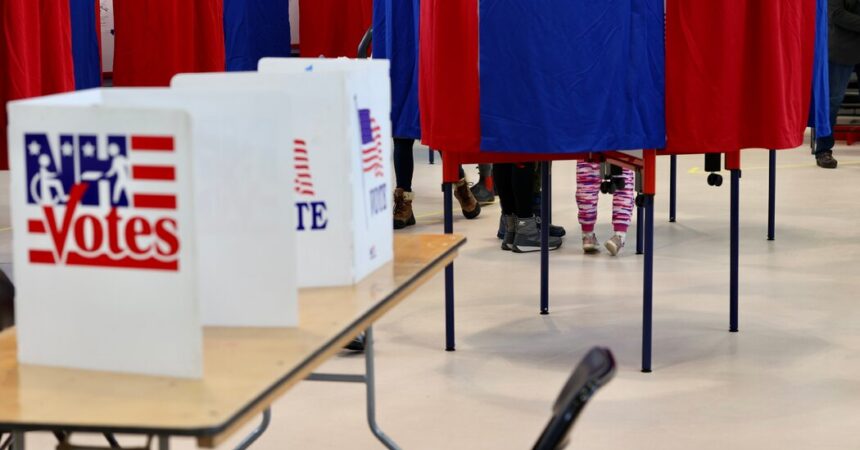We’re trying to find more ways to weigh in on the political conversation as the tempo of the campaign picks up.
This is our first try: a weekly roundup newsletter, offering thoughts on some of the bigger questions of the week and a few of our favorite links. There will also be an opportunity to answer occasional reader questions.
Racial realignment?
“Realignment” is the holy grail of American politics — the fantasy of every political consultant who wants to usher in a new era of Democratic or Republican dominance.
What’s a realignment? It’s a lasting shift in the partisan allegiance of the country, or at least a large demographic group. Think, for instance, of the rise of Franklin D. Roosevelt’s New Deal coalition, or the realignment of the South from Democrats to Republicans after the enactment of the Civil Rights Act. These are epochal, defining moments in American history.
With that in mind, try to imagine how wide my eyes got when I read an article in The Financial Times arguing that America is undergoing a “racial realignment,” seemingly based on the results of our last New York Times/Siena College poll, which found President Biden leading by a slim 10 points among nonwhite voters, a group that usually backs Democrats by 50-plus points.
This claim strikes me as, at best, premature. The general election campaign is barely underway, and poll results in February do not constitute a realignment. As we have written several times: No one should be remotely surprised if Mr. Biden ultimately reassembles his support among Black and Latino voters. Alternately, many of the dissenting voters may simply stay home, as they did in the midterms. This would be bad for Mr. Biden, but it would be no realignment.
Perhaps a more interesting question is whether the current polling would count as a realignment if it held in the final results. Clearly, it would be a significant shift with hugely important electoral consequences, both now and beyond. In the final account, it might clearly demarcate a post-Civil Rights era, when Democrats could count on overwhelming support from nonwhite voters, from a new era when they cannot.
But even in the worst case for Democrats, Mr. Biden would probably still win among Black, Hispanic and Asian American voters. This would arguably fall short of counting as a wholesale realignment in political preferences.
For good measure, realignments usually require a subsequent election to confirm the shift. In the old political science textbooks, this is sometimes called a “confirming election.” That’s because unique candidates and circumstances can produce major electoral shifts that don’t last.
It’s hard enough to predict whether Donald J. Trump’s gains in the polls among nonwhite voters will last until November, let alone whether they’ll fuel Republicans through 2028. His resilience will probably depend on the source of his strength, which is still up for debate. Last fall, I worked through five hypotheses, and some might be likelier to yield a lasting shift than others. Even beyond this cycle, if Mr. Trump won, how he governed in the White House would be an important variable. Mass deportations of undocumented immigrants, for instance, may not be the way to cement an incipient realignment of young, nonwhite and Latino voters.
All that said, there is a case to think of Trump gains among Black and Latino voters as part of a broader realignment: the realignment of American politics along the lines of Mr. Trump’s conservative populism.
It may not have happened in one realigning election, but if you take 2016, 2020 and a hypothetical 2024 result that mirrors today’s polling together, you have a pretty fundamental change in the dimensions of partisan conflict compared with the elections from 1980 to 2012. If Mr. Trump’s gains among working-class white voters ultimately extended to working-class Black and Latino voters as well, it would represent the culmination of a decadelong shift in American politics, whether you call it a realignment or not.
Did the State of the Union lift Biden’s numbers?
Two weeks after the State of the Union address, there are a few hints that maybe, just maybe, Mr. Biden’s poll numbers have started to tick up a bit.
If you squint at the figures, the most prolific online pollsters show his approval rating inching up, by an average of around a point or two. His gains in the polling of the presidential race are even smaller, but it’s just enough to make the case that something’s afoot.
It’s also just small enough to question whether anything is happening at all, especially as there has been plenty of unfavorable data for Mr. Biden. He has not led in any battleground state poll over the last few weeks, and Mr. Trump led the latest Selzer poll by seven points nationwide. It’s worth being cautious until there’s additional high-quality polling.
Whether it’s little change or no change, it shouldn’t be any big surprise that the State of the Union didn’t upend the race. Historically, it doesn’t move the polls much. It’s mostly watched by highly engaged partisans who already hold firm views about the president.
Thing on the internet
It’s hard to believe, but the Roper Center for Public Opinion Research may have published a game about polling that is actually fun: Campaign Weathervane. The core of the game is to try to guess historical polling results, like how you believe Americans in 1940 would have responded to the question: “If England is defeated in the next few weeks, should we invite Canada to become part of the United States?”
I’ll admit it: I enjoyed it.

